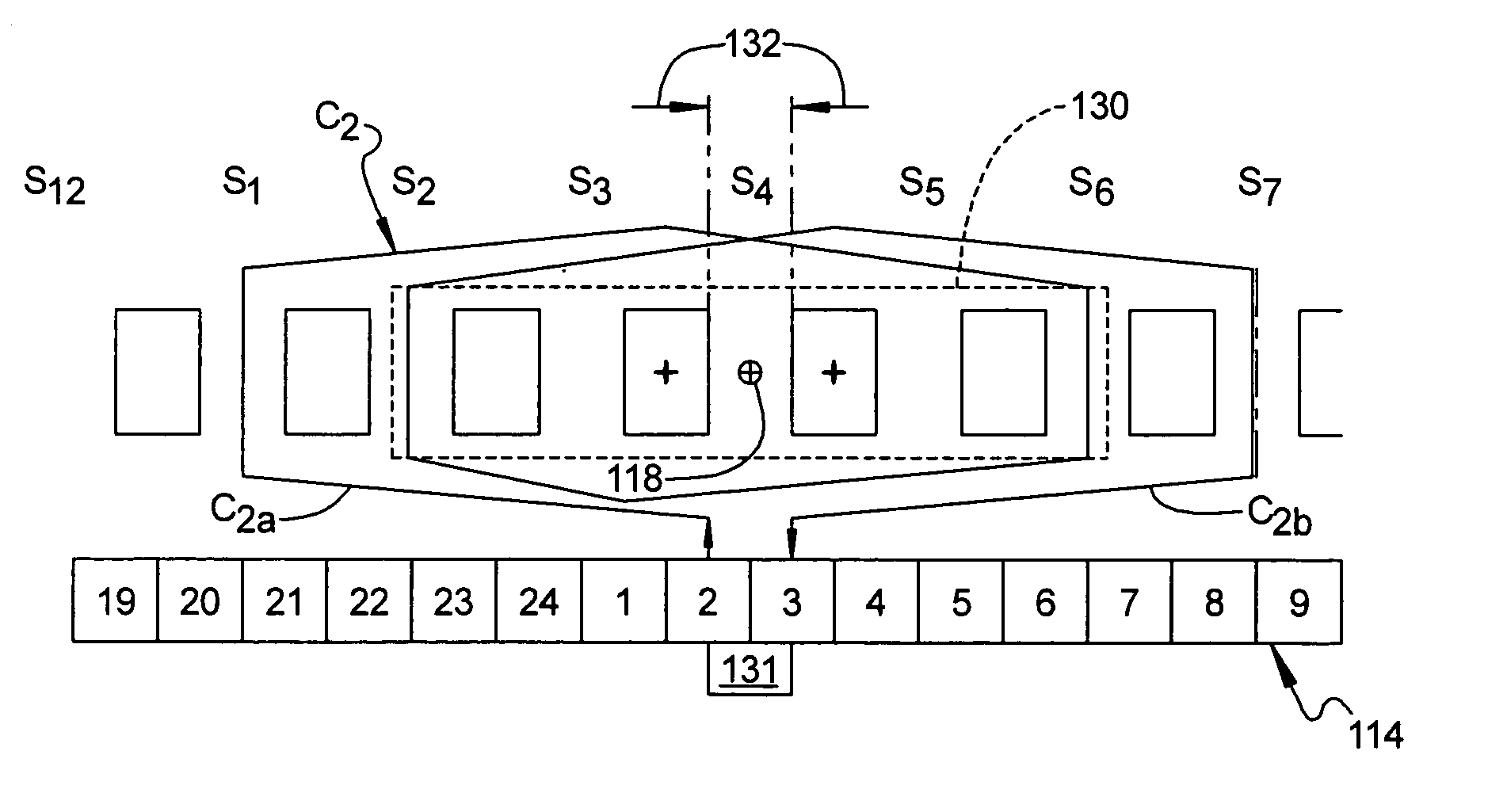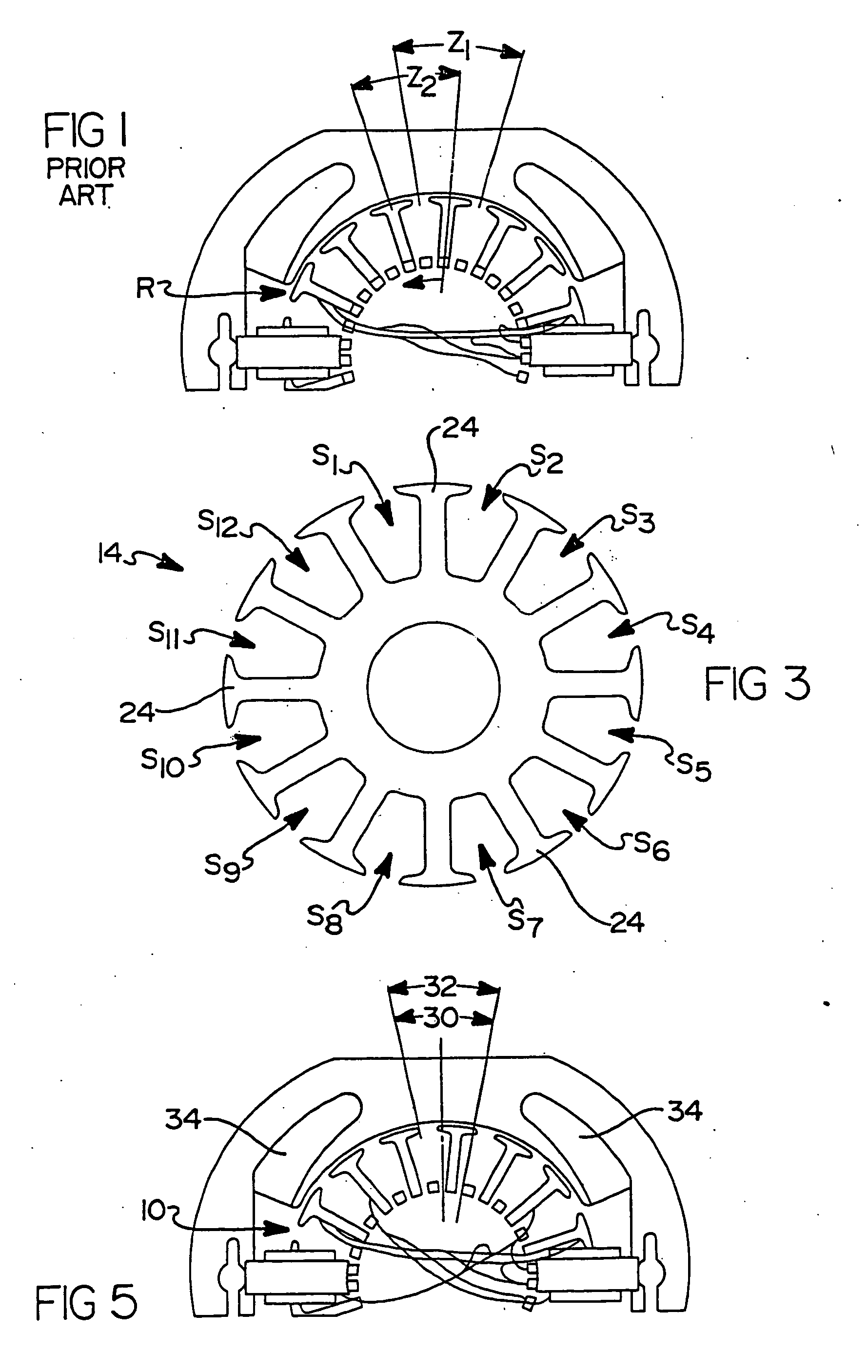Motor armature having distributed windings for reducing arcing
- Summary
- Abstract
- Description
- Claims
- Application Information
AI Technical Summary
Benefits of technology
Problems solved by technology
Method used
Image
Examples
Embodiment Construction
[0026] Referring to FIG. 2, there is shown an armature 10 for a brush commutated electric motor 11 having a plurality of coils wound in accordance with the teachings of the present invention. The armature 10 includes a commutator 12 which, merely by way of example, includes 24 independent commutator segments 121-1224. A lamination stack 14 is used to support a plurality of 24 coils 251-2524 wound thereon. An armature shaft 22 extends through the lamination stack 14 and is fixedly coupled to a gear reduction assembly 20 and also to a fan 18. It will be appreciated, though, that the fan 18 and the gear reduction assembly 20 are optional and not essential to the armature 10 of the present invention, and shown merely because they are components that are often used in connection with an armature for an electric motor.
[0027] Referring to FIG. 3, the lamination stack 14 is illustrated without any coils wound thereon. The lamination stack 14 includes a plurality of radially projecting lami...
PUM
| Property | Measurement | Unit |
|---|---|---|
| Magnetism | aaaaa | aaaaa |
Abstract
Description
Claims
Application Information
 Login to View More
Login to View More - R&D
- Intellectual Property
- Life Sciences
- Materials
- Tech Scout
- Unparalleled Data Quality
- Higher Quality Content
- 60% Fewer Hallucinations
Browse by: Latest US Patents, China's latest patents, Technical Efficacy Thesaurus, Application Domain, Technology Topic, Popular Technical Reports.
© 2025 PatSnap. All rights reserved.Legal|Privacy policy|Modern Slavery Act Transparency Statement|Sitemap|About US| Contact US: help@patsnap.com



